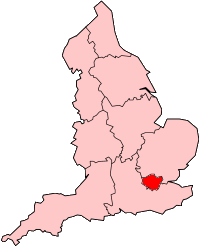Hounslow Loop Line
| Hounslow Loop Line | |
|---|---|
| Overview | |
| Type | Commuter rail, Suburban rail |
| System | National Rail |
| Status | Operational |
| Locale | Greater London |
| Operation | |
| Opened | 1850 |
| Owner | Network Rail |
| Operator(s) | South West Trains |
| Technical | |
| Track gauge | 1,435 mm (4 ft 8 1⁄2 in) standard gauge |
| Hounslow Loop Line | |||||||||||||||||||||||||||||||||||||||||||||||||||||||||||||||||||||||||||||||||||||||||||||||||||||||||||||||||||||||||||||||||||||||||||||||||||||||||||||||||||||||||||||||||||||||||||||||||||||||||||||||||||||||||||||||||||||
|---|---|---|---|---|---|---|---|---|---|---|---|---|---|---|---|---|---|---|---|---|---|---|---|---|---|---|---|---|---|---|---|---|---|---|---|---|---|---|---|---|---|---|---|---|---|---|---|---|---|---|---|---|---|---|---|---|---|---|---|---|---|---|---|---|---|---|---|---|---|---|---|---|---|---|---|---|---|---|---|---|---|---|---|---|---|---|---|---|---|---|---|---|---|---|---|---|---|---|---|---|---|---|---|---|---|---|---|---|---|---|---|---|---|---|---|---|---|---|---|---|---|---|---|---|---|---|---|---|---|---|---|---|---|---|---|---|---|---|---|---|---|---|---|---|---|---|---|---|---|---|---|---|---|---|---|---|---|---|---|---|---|---|---|---|---|---|---|---|---|---|---|---|---|---|---|---|---|---|---|---|---|---|---|---|---|---|---|---|---|---|---|---|---|---|---|---|---|---|---|---|---|---|---|---|---|---|---|---|---|---|---|---|---|---|---|---|---|---|---|---|---|---|---|---|---|---|---|---|---|
Legend | |||||||||||||||||||||||||||||||||||||||||||||||||||||||||||||||||||||||||||||||||||||||||||||||||||||||||||||||||||||||||||||||||||||||||||||||||||||||||||||||||||||||||||||||||||||||||||||||||||||||||||||||||||||||||||||||||||||
| |||||||||||||||||||||||||||||||||||||||||||||||||||||||||||||||||||||||||||||||||||||||||||||||||||||||||||||||||||||||||||||||||||||||||||||||||||||||||||||||||||||||||||||||||||||||||||||||||||||||||||||||||||||||||||||||||||||
The Hounslow Loop Line is a railway line in southwest London which was opened by the London and South Western Railway in 1850. It leaves the Waterloo to Reading Line at Barnes Junction and after some seven and a half miles rejoins it at a triangular junction between Whitton and Feltham. Passenger services, all operated by South West Trains, either loop back to Waterloo by the junctions or continue southwest via Feltham. The line is electrified at 750 V DC (third rail). It provides access to the North London Line for freight services both passing through Clapham Junction to the north east and connecting to the rail network to the south west.
Service
The typical weekday service in trains per hour is:
- 2 from Waterloo, taking the loop at Barnes and leaving it beyond Hounslow to return to Waterloo
- 2 taking that route in the reverse direction
- 2 from Waterloo, leaving the loop line beyond Hounslow to go via Feltham to Weybridge
- 2 from Weybridge to Waterloo
- Limited trains to/from London start/terminate at Hounslow
The Sunday service is
- 1 train per hour in each direction between Waterloo and Woking via Staines
- 1 train per hour between Waterloo and Hounslow via Brentford in the afternoon.
Ridership
The line has seen a steep increase in ridership levels in recent years, corresponding with the doubling of train frequencies from 2 trains per hour in each direction to 4 (except on Sundays). The line's seven stations had combined passenger numbers of 5.565 million in 2007–08 (based on station exits), a 162% increase on the 2004–05 figure of 2.122 million.[1]
Future
Most stations are having platforms lengthened to allow the operation of 10 coach trains from May 2013. Where this is not possible, selective door opening will be used. Additional rolling stock Class 460 is being cascaded to provide the services. Platform 20 at Waterloo (within the Eurostar terminal) is due to come into use in May 2014 to provide additional capacity. dft.
References
- ↑ "Station usage estimates". Rail statistics. Office of Rail Regulation. Please note: Some methodology may vary year on year.
Further reading
- Moody, G.T. (1979). Southern Electric 1909-1979. Ian Allan. ISBN 0-7110-0924-4. External link in
|publisher=(help) - Glover, John (2001). Southern Electric. Ian Allan. ISBN 0-7110-2807-9. External link in
|publisher=(help)
